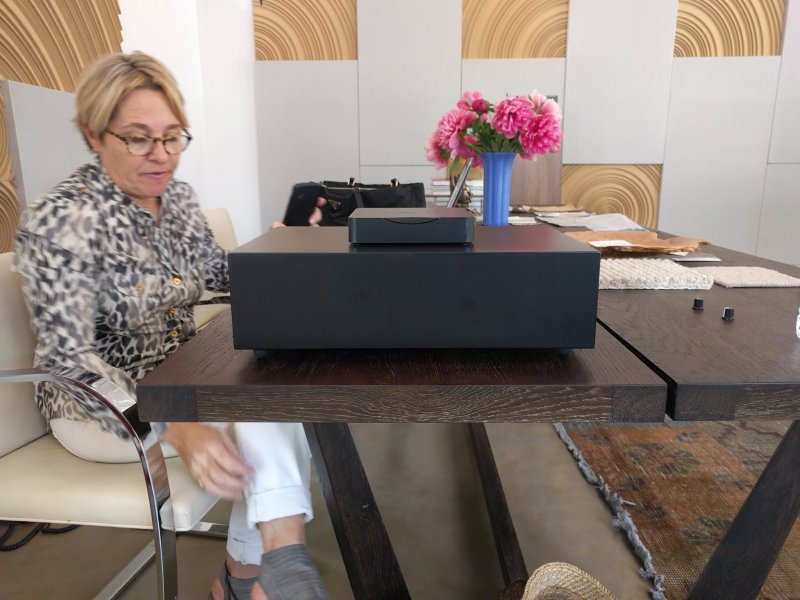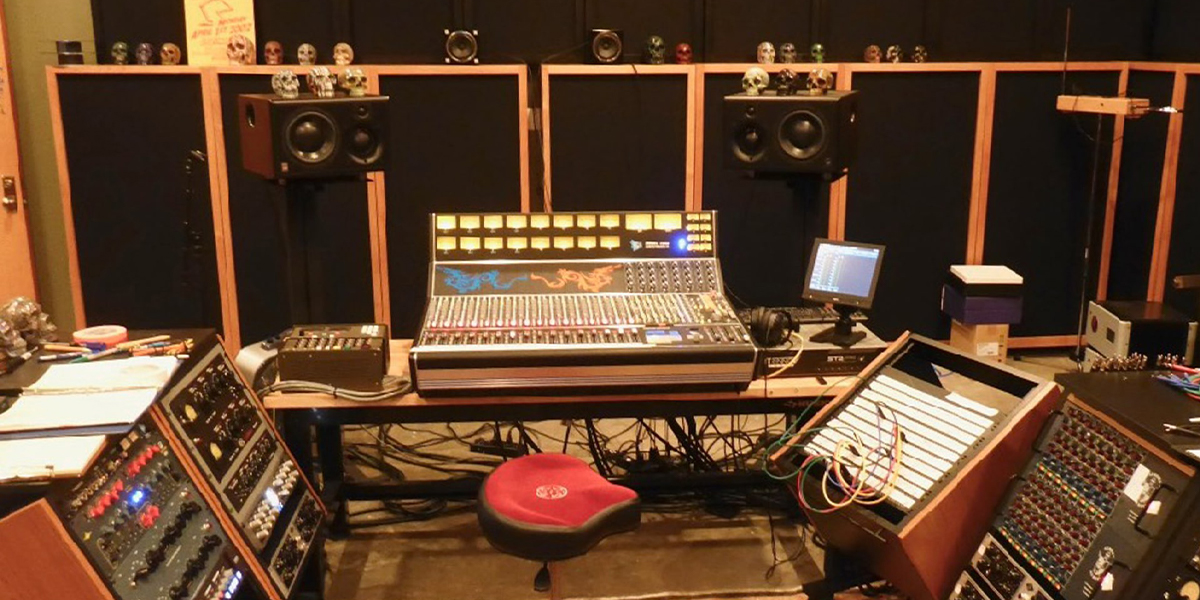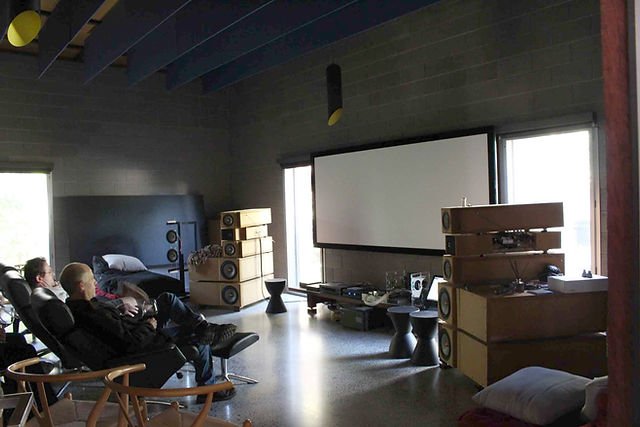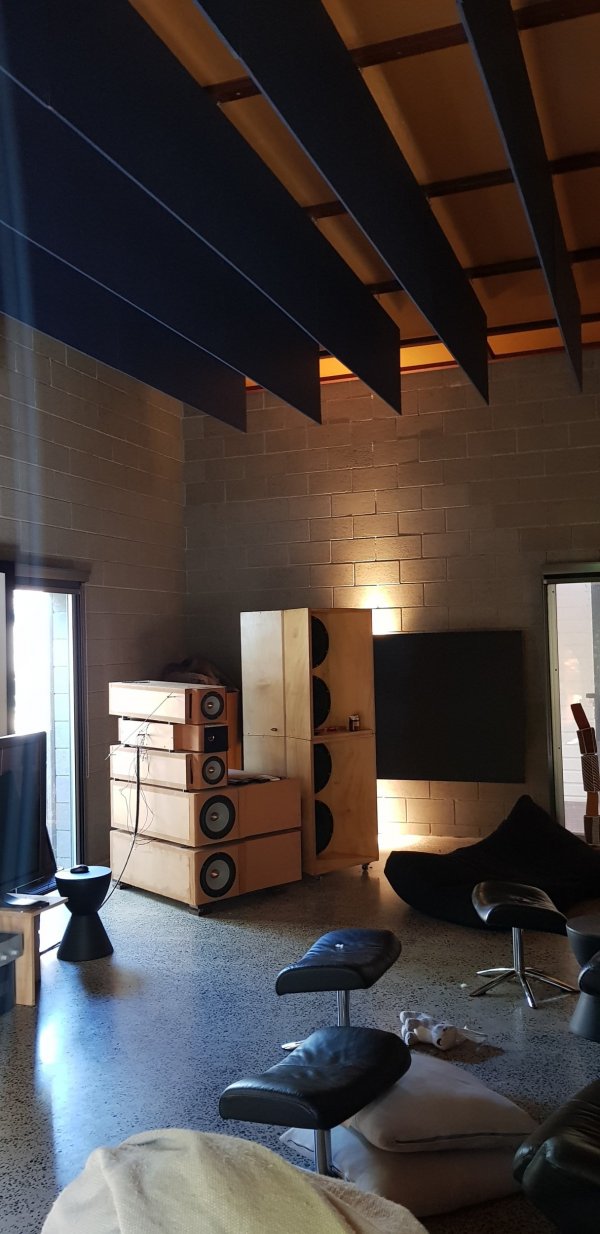Part 2 of GIK response:
Generalities:
The best panel is the thickest panel. Always. There is never a scenario where acoustically something thinner (working on narrow high reflective frequencies only) is the right choice; acoustically. When full range audio (more than just a human voice) is in play, you want Every. Single. Panel. (ideally) to be helping towards contribution of a more linear low frequency response. This sounds like a sales tactic. I assure you it is not. Now…. Is a thin panel necessary in some cases? Sure. Budget. Space. Acoustics are not the only thing that is important. But in a pro designed room, the entirety of walls and ceiling
are bass traps. Many of them 3’ thick or more. The walls
are the bass traps. How you would face or “skin” (Flexrange) the bass traps depends on what zone of the room they fall in, and in a more finessed way that is complicated to explain fully: “what overall level of decay time are you trying to achieve”, keeping in mind that we want to (regardless of wetter or drier) decay equally from 20hz to 20khz. It is very easy to get 20Khz to decay quickly.
Too easy. The converse of this is that it is massively difficult to get 20Hz to decay quickly. This makes the application of what would be defined as a “really dry” room pragmatically difficult to achieve in domestic sized rooms because you do not have to real estate to get really dry bass. As a result you have to treat the higher frequencies with some level of finesse so that you don’t over dry them. This is where diffusion comes in, this is where range limiting comes in and this is why the three zones and how you look at them acoustically is so important, specifically in these domestically sized rooms.
This last paragraph is everything. It’s worth reading a few times.
Prioritization:
Corners will get you the most bang for your buck on bass traps In or near vertical and horizontal corners, you want to put the bass traps that are sized right from your room. Meaning that you want bass traps that can (ideally) work as low as the lowest frequency that will resonate in your room based on its size. 60-70% of your budget can easily end up in corners. How you range limit, leave full range or scatter plate the options of corner bass traps will become more clear later in these steps of prioritization.
You want to cover the direct reflection points between your speakers and ears; and this falls entirely into the ‘zone two camp’. Using
the mirror trick will help you find the specific targets of zone two that are most critical but keep in mind that you lean in, kick back, stand up… ideally you are doing the mirror trick from every spot you are going to be judging the speakers critically. It is not wrong to entirely cover zone two with panels, but this can be problematic budgetarily and remember we want them to be as thick as possible. Zone two panels, in a critically neutral roll should be full range absorptive. No scattering. No limiting. Same would go for the ceiling corners if you have the budget to address them. End user roles where enjoyment is prioritized over transparency will often diffuse zone two. This is not wrong, but it is not as transparent.
The rear wall (back of zone three) is your next order of prioritization. This is the surface that ‘turns everything around’. The rest of zone three is really only important if acoustically critical things happen behind you in the room. But if it is “you and a pair of speakers” the rear wall is highly important. The rest of zone three is the lowest of priorities even under what’s to follow. As far as this rear wall goes, if you can cover a lot of it, you should do so with diffusive faced bass traps. If you can only cover a little of it because you have windows and doors or other obstacles, you will lean more and more on pure absorption. Rule of thumb: if you’re going to be covering 30% or higher of the rear wall it should be diffusive. If it’s going to be less than that, and this includes the corners, than I would deploy full range bass traps.
This brings us to the front wall of zone one. Behind and around your speakers. Only after those first three points have been addressed do you look to affect the front wall. Bass traps (as always) go here. While the sound that leaves a conventional speaker that is ~150Hz and up, those regions of audio are directional. But lower frequencies, regardless of the presence of location of a port on your speaker, leave the cabinet in a sphere. This is important: what you do on the front wall has everything to do with what you are able to do on the back wall. Think of it this way: If the REAR wall is entirely diffused, and it’s turned the directional speaker sound around and done so with 100% diffusion…. In this scenario your front wall’s reflectivity is a non-issue. Now, we would certainly love to have bass traps on it, we want those everywhere…. But we would want them to be range limited versions in the scenario where we get a high degree of REAR wall coverage of treatment. The reason here is that we are trying to treat the reflective range of frequencies with nuance, and have it decay at a rate that is similar with low frequency decay in the room. If the sound has already been adequately diffuse on the first bounce, there is no reason to further rob it’s energy on this second lap. It will have decayed on its own having just travelled and turned around. Now, in a version of a room where zone 3’s back wall can NOT be covered, in this case zone one’s wall should be covered with more full range and or diffusive traps, so that we can adequately address the relationship of these two surfaces that send sound back and forth in the room reflectively speaking. To reiterate and nutshell this: zone three’s back wall determines everything. If I add the sq.ft. of the front and back walls together I like to have ideally diffused half of the total. 30% is passable, especially if the reason I cannot do more is because there’s texture already on the walls (shelves and non-entirely flat things). If the reason I cannot do more is because of glass, I’d ideally be getting closer to that 50% diffusion of the total of the sum spread on the two surfaces. Any remainders as budget and space allows would be devoted to range limited bass traps in zone one.
If you follow this protocol, you will have a very balanced room. The more coverage of each of these zones by order of priority, the better. The caveat here is that
more coverage should never come at the compromise of panel thickness.
Part 3 to follow in next post





